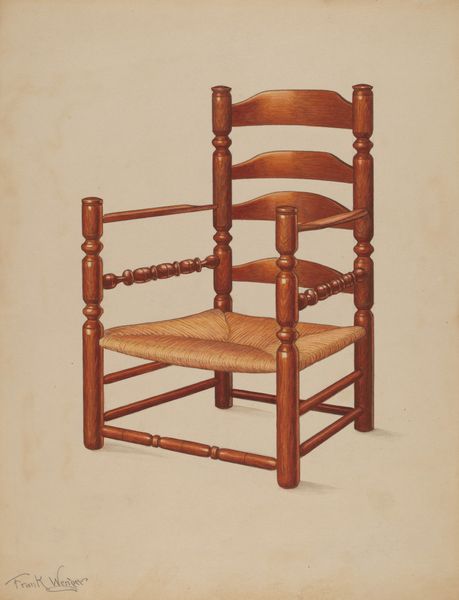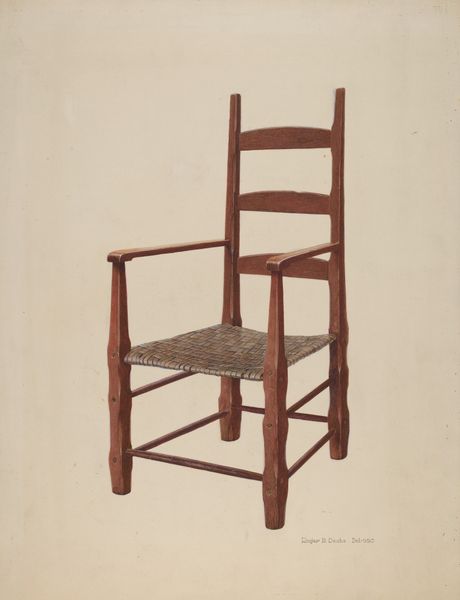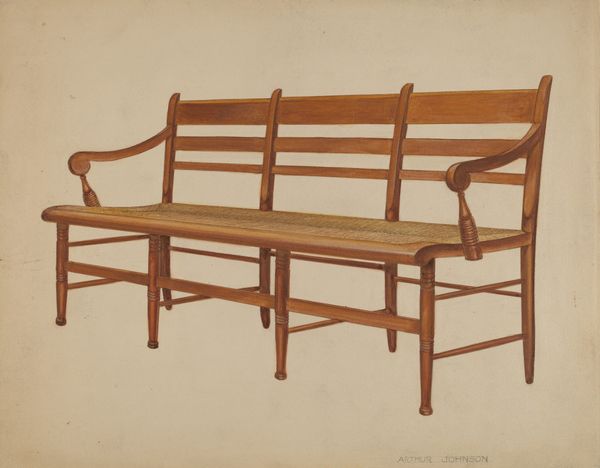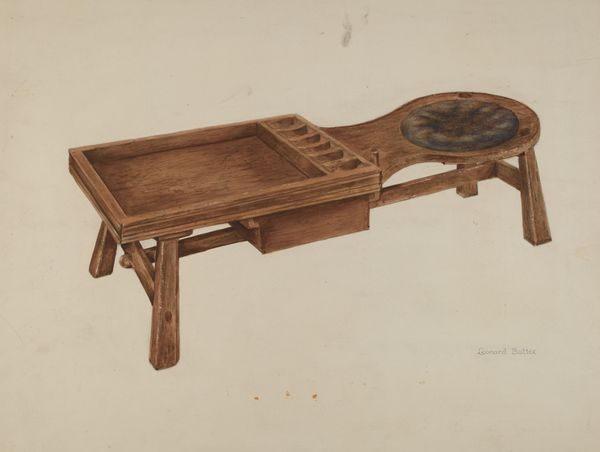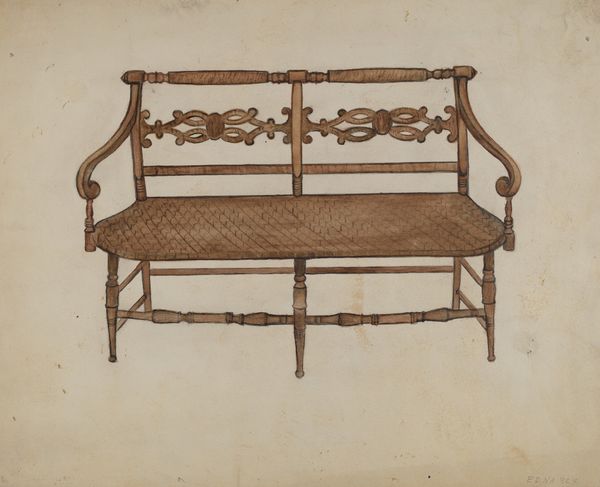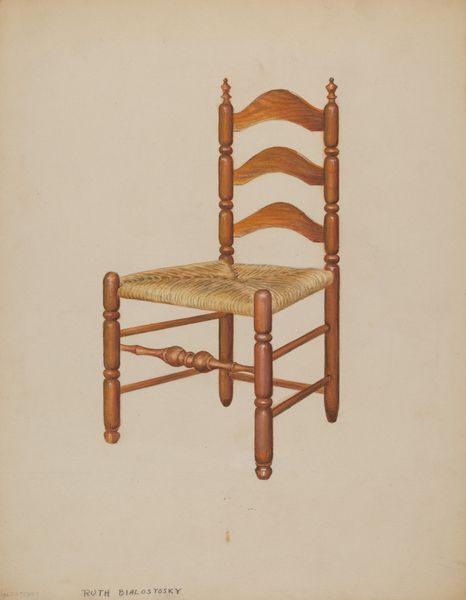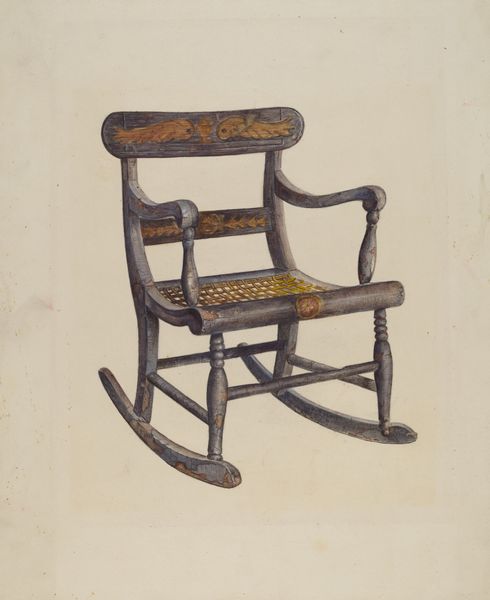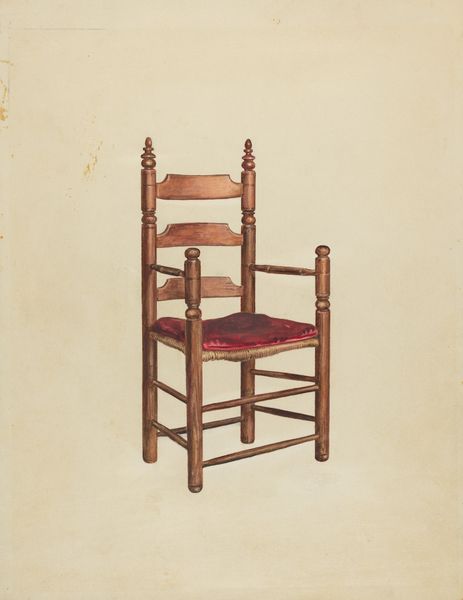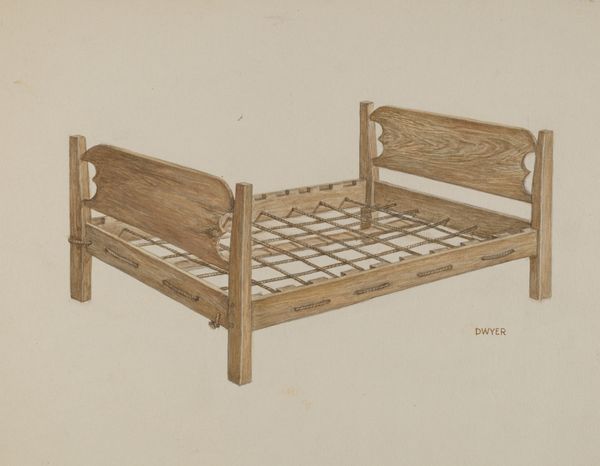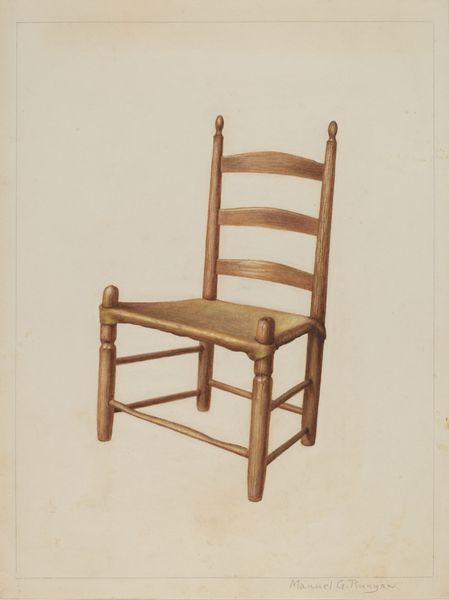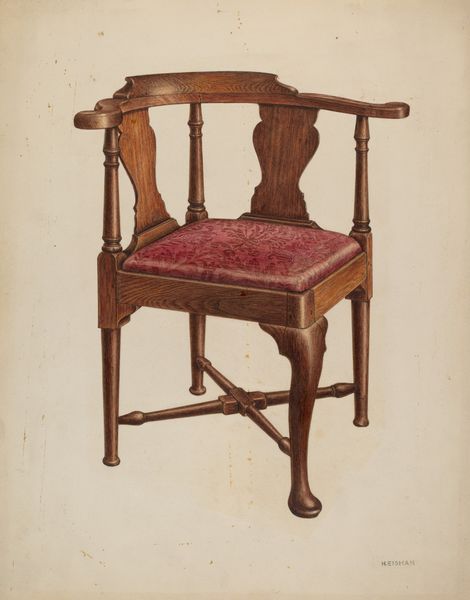
drawing, watercolor, pencil, wood
#
drawing
#
charcoal drawing
#
watercolor
#
pencil
#
wood
#
watercolour illustration
#
academic-art
Dimensions: overall: 35.7 x 44.7 cm (14 1/16 x 17 5/8 in.)
Copyright: National Gallery of Art: CC0 1.0
Curator: Welcome. We're standing before Al Curry's "Wooden Bed," created around 1937, rendered in watercolor, pencil, and charcoal on wood. Editor: It has a beautifully austere quality, doesn’t it? There’s an intimacy in the mundane; an old bedframe visualized so tenderly makes it into a sacred structure. Curator: Absolutely. Note how the meticulous linework and restrained palette draw our attention to the craftsmanship and design. See the turned posts and how the light gently defines their forms, almost classical. The textures within the wood are gorgeous as well. Editor: While you see neoclassical form, I think it would be relevant to interpret that ‘austere quality’ through a lens of social realism common in the Depression-era. For many during that time, a simple bed represented stability and comfort amid financial insecurity. Curator: Interesting point. And I agree that the detail, almost architectural in precision, transforms this domestic object into something far more considered. The added detailed study on the lower left highlights its construction— it is meant to be seen as something fundamentally engineered, thought through, solid, as beds should be. Editor: Precisely! The very *idea* of stability is what really moves me here. The exposed frame also makes one ponder the people who lay here, whether it's someone resting or building memories – and how this artwork might invite consideration of economic and historical trauma passed down intergenerationally. Curator: A strong connection! It's a subtle reminder that function and form intersect with intimate human experiences. By stripping down the image of this "Wooden Bed" to its essential elements, we appreciate design choices and evoke powerful narratives. Editor: Ultimately, Curry's piece reveals how something as seemingly unremarkable as a bed frame carries stories far beyond its utility, serving as a poignant commentary on the hopes and realities of an era. Curator: Yes. There is so much implied in its solid presentation of this everyday artifact. The quiet attention encourages a powerful reflection.
Comments
No comments
Be the first to comment and join the conversation on the ultimate creative platform.
